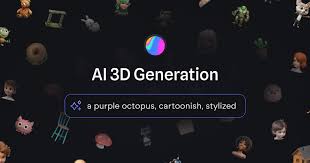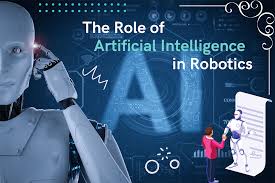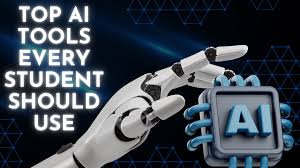
3D design has always been a complex and time-consuming field, requiring advanced skills in software and a deep understanding of spatial relationships. However, with the rise of artificial intelligence (AI), the creation of 3D designs is entering an exciting new era. AI-generated 3D designs are simplifying the process, empowering creators, and unlocking new possibilities across industries. In this blog, we’ll explore how AI is transforming the world of 3D design, its benefits, applications, and the future it holds.
What is AI-Generated 3D Design?
AI-generated 3D design refers to the use of artificial intelligence to assist in the creation, optimization, and refinement of three-dimensional objects, environments, and animations. Using machine learning algorithms, neural networks, and generative models like GANs (Generative Adversarial Networks), AI can learn from vast datasets of 3D models and generate new designs based on specific inputs.
AI doesn't just automate mundane tasks; it can also assist designers in conceptualizing and refining complex 3D models, predict design outcomes, and generate realistic textures and lighting for virtual environments. These capabilities are changing how designers approach 3D modeling, rendering, and animation.
How AI is Revolutionizing 3D Design
-
Accelerating the Design Process Creating a 3D model from scratch is a meticulous process, requiring the designer to build each part of the model, ensure proper geometry, and adjust for realism. AI helps streamline this process by automatically generating parts of a design or suggesting design elements based on user input. Instead of starting from nothing, AI can generate the basic shape of an object, saving hours of manual modeling work.
Additionally, AI-powered tools can take a 2D image and convert it into a 3D model, making it easier for designers to transition from concept to execution. For example, AI can take a rough sketch or even a photo and transform it into a realistic 3D object, giving the designer a fast start on their creative project.
-
Creating Complex and Intricate Designs One of the key strengths of AI in 3D design is its ability to generate intricate and highly detailed models. AI algorithms, especially those using deep learning, can analyze vast databases of 3D models and generate highly detailed designs that would be time-prohibitive for human designers to create manually.
In architecture, for example, AI can suggest complex structural elements like curvatures, arches, and interconnected geometries that are both functional and visually striking. This enables designers and architects to experiment with new forms and innovative designs that might not have been conceived without AI assistance.
-
Optimizing Models for Different Uses AI doesn’t just generate raw models—it can also optimize them for specific uses, ensuring that they are suitable for real-world applications. For example, in product design, AI can help create models that are not only aesthetically appealing but also optimized for manufacturability. This might involve optimizing for material usage, structural integrity, or production efficiency, ensuring that the design is both visually impressive and practical.
AI can also help adjust 3D models for virtual environments. For example, in gaming or VR, AI can automatically scale models to ensure they run smoothly in real-time without sacrificing visual quality. AI can predict how a 3D model will behave under certain conditions and adjust it to meet performance requirements.
-
Generative Design: AI as a Creative Partner Generative design is a design approach that uses AI algorithms to produce a wide range of design possibilities based on a set of inputs. In 3D design, this can involve feeding the AI system with parameters like size, material properties, weight, and other constraints. The AI then generates multiple iterations of the design, exploring different approaches that meet the given requirements.
This type of design can result in unexpected and innovative solutions that a human designer might not have thought of. For example, AI might generate a complex lattice structure that is both strong and lightweight, perfect for aerospace applications, or suggest organic shapes that optimize fluid dynamics in automotive design.
-
AI-Enhanced 3D Textures and Materials Another area where AI is making waves is in the creation of textures and materials for 3D models. In traditional 3D modeling, creating realistic textures and surface details can be painstakingly complex. AI can simplify this process by generating detailed, lifelike textures based on the characteristics of real-world materials.
Using deep learning algorithms, AI can study textures from real-world objects—such as wood, stone, or fabric—and apply them to 3D models, giving them a more authentic look. These textures can even be dynamically adjusted based on lighting conditions or user interactions in virtual environments.
-
Real-Time Rendering and Visualization AI is also revolutionizing how 3D models are rendered. Rendering, the process of creating realistic images from 3D models, can be extremely time-consuming, especially when it involves complex lighting, shadows, and reflections. AI is being used to speed up this process by predicting lighting conditions and generating realistic renderings in real-time.
For example, AI-powered ray tracing algorithms can simulate how light behaves in a scene more efficiently than traditional methods, producing photorealistic results much faster. This is particularly useful in industries like gaming, architecture, and film, where real-time rendering is essential for immersive experiences.
Applications of AI-Generated 3D Designs
-
Architecture and Urban Planning In architecture, AI is helping designers create complex structures, predict building performance, and optimize layouts for space utilization and sustainability. AI-driven 3D design allows architects to explore innovative building shapes, test the feasibility of various designs, and optimize the building’s environmental impact.
-
Gaming and Virtual Reality (VR) The gaming industry is one of the most prominent sectors adopting AI in 3D design. AI is used to generate realistic 3D environments, characters, and animations, all of which enhance the gaming experience. Additionally, AI helps automate the creation of vast game worlds, ensuring that they are both rich and interactive.
-
Product Design and Manufacturing AI is also transforming product design, from consumer goods to industrial components. AI-generated 3D designs enable manufacturers to explore numerous variations of a product to find the most efficient or cost-effective solution. AI-powered generative design also helps produce designs that minimize waste and reduce production costs.
-
Film and Animation In film and animation, AI is being used to generate 3D models of characters, props, and environments. These AI-generated assets can save studios valuable time and resources while also enhancing creativity. Furthermore, AI-driven tools can automatically rig 3D characters for animation, streamlining the animation process.
The Future of AI-Generated 3D Designs
The potential of AI in 3D design is vast, and we’re just scratching the surface. As AI algorithms continue to evolve, we can expect even more advanced tools that can generate complex 3D designs autonomously, allowing creators to focus on refining ideas and exploring new possibilities. Additionally, the integration of AI with other emerging technologies, such as augmented reality (AR) and mixed reality (MR), will create new opportunities for interactive 3D design.
Conclusion
AI-generated 3D designs are transforming how we think about and create digital objects, environments, and animations. From speeding up design processes to enabling complex, innovative creations, AI is making 3D design more accessible, efficient, and creative. As the technology continues to advance, the future of AI-driven 3D design promises even more groundbreaking developments, empowering creators across industries to push the boundaries of what’s possible. Whether you’re in architecture, gaming, product design, or animation, AI is here to stay, and it’s revolutionizing the way we create.

